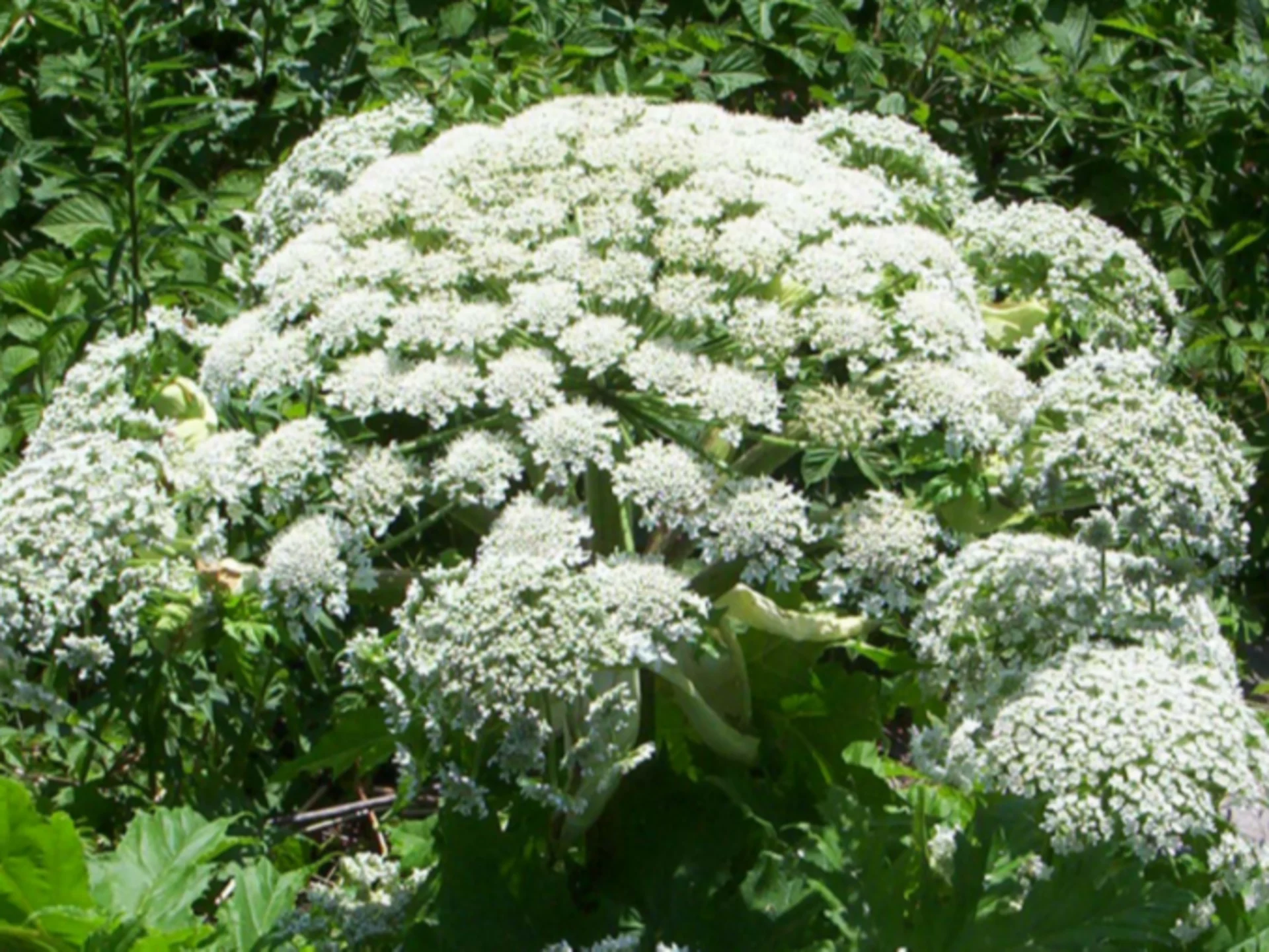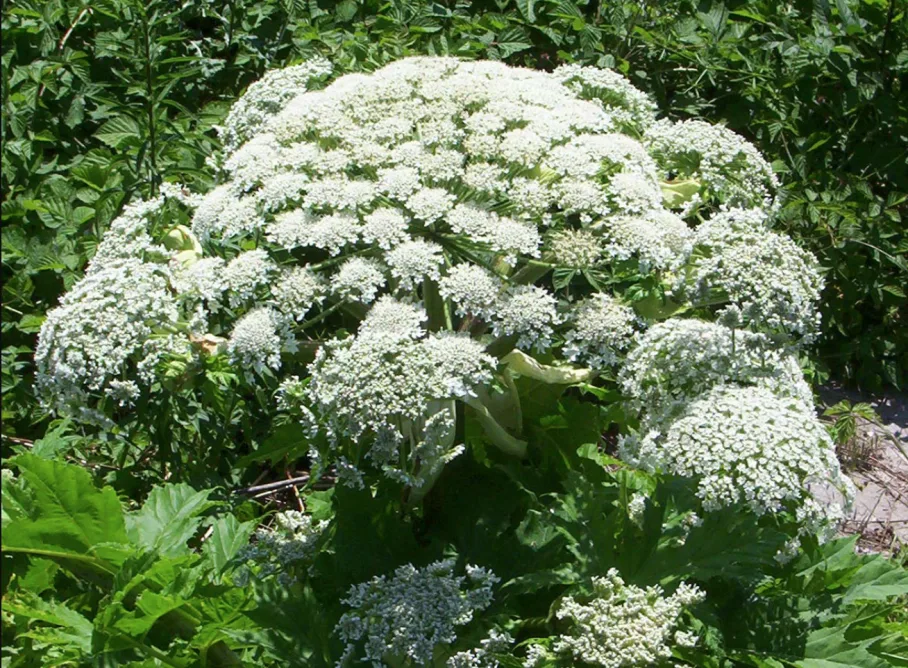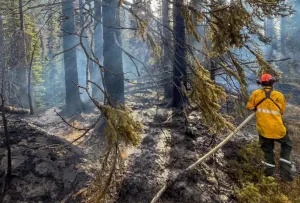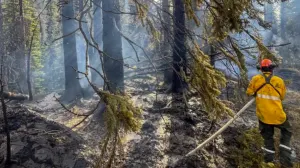
Avoid at all costs: What makes giant hogweed so dangerous
This plant that’s popping up across Canada has potential to cause third-degree burns
I’ve dropped myself half a kilometre into the crater of a live volcano, I’ve swum with sharks in the open ocean, I’ve lived through 23 hurricanes, and standing amidst a field of innocuous (but large) green plants scared me at least as much as any one of those adventures.
Ok, I’m overstating the risk a bit, but giant hogweed is not a plant you want to tangle with and to get anywhere near it I had to make sure I was in full hazmat gear...on a 30°C day. I’d rather lose five litres of water through sweating than deal with what hogweed can do to you.
The problem with giant hogweed (Heracleum mantegazzianum) is the sap of the plant. Get some on you and your skin loses its ability to protect itself from the sun within as little as 15 minutes. This means that it’s possible to then get a third-degree sunburn with blisters, scarring, infection, etc. This is not a plant you want to fool around with.
In scientific terms, the sap is phytotoxic and the skin reaction is known as phytophotodermatitis. The chemical furanocoumarin, found in the sap, interacts with DNA in the skin cells, causing crosslinks between strands (this is very bad) and eventually kill the cell. This only happens if the skin is exposed to a specific wavelength of ultraviolet light, but unfortunately for us humans, that wavelength accounts for 95 per cent of the UV light that strikes the surface of the Earth.
SEE ALSO: What you need to know about poison ivy
None of science of DNA disruption was all that important to me as I followed John Kemp, the founder of The Giant Hogweed Mitigation Project, into a sunlit glade nestled at the edge of the Grand River in Kitchener, Ont. I just wanted to know what giant hogweed looked like and how I could make sure that I wasn’t going to get burned by it. The glade looked like any other cleared area – a few trees, vast swathes of garlic mustard and a curious, dark green, large leafed plant that seemed to be everywhere, nestled in an amongst the spindly garlic mustard.

Giant hogweed flower head. (Appaloosa/Wikipedia Creative Commons. CC BY-SA 3.0)
RELATED: Beware of 'margarita burn'
“That’s it right there,” John said, as he used his shovel to overturn a small version of the plant that surrounded us. “See the hairs on the stem, and on the underside of the leaf? They ooze the toxic sap. So you don’t need to damage the plant to get it on you, you just have to brush by it on the trail.”
I suddenly realized that the large plants that I was seeing throughout the clearing were all giant hogweed. I was expecting the characteristic 10-foot stalks with glorious flowers that made the plant look like Queens Anne’s Lace on steroids. These were large, deeply lobed leaves that were roughly the size of rhubarb ones, but much taller, about at waist height.

No one should approach a giant hogweed plant withough proper protective gear. (Mark Robinson/The Weather Network)
“You don’t get the big flowers until around mid-July, “ John explained. “There’s two times of the year where we can easily identify hogweed; early spring as is the first to come up and mid-July when the flowers are in full bloom. It’s easy to remove in spring as you can just dig it up with a shovel, making sure to get about four inches below the surface. However, in the summer, you’re dealing with a plant taller than you and getting splashed with the sap as you’re removing it is very easy. A full hazmat suit is essential along with a facemask, gloves and rubber boots.”
Giant hogweed is an invasive species, first introduced to North America in the early 20th century as an ornamental plant due to its spectacular beauty and size. However, it quickly escaped the garden and began to colonize swampy areas along the edges of rivers as moving water can easily transport the seeds. In the present day, it is found all over Canada except the Prairies, and was first identified in the Greater Toronto Area in 2010.
I heard the crunch of the stem before I’d realized I’d stepped right on one of the many plants that made up the dense stand of hogweed, and I looked down to see that my hiking boot was now wet with the terrifying phytotoxic sap. I knew that I’d consigned my boots to the cleansing flames as they were forever tainted, but once again, it was John to the rescue.
“The sap becomes inert once it dries out or is washed off so any clothing that it gets on can be thrown in the washer and it’ll be just fine. Be very careful to not touch it when you put it in; use gloves and anything like your tripod or bag should be left out to dry off for a day or so and it’ll be fine.”
Of course, the worst-case scenario was getting it on the skin and so far I’d been OK. I’d been very diligent with the hazmat suit I was wearing, but given that we’d seen multiple plants right along the edge of a trail, it was inevitable that someone would get the sap directly on their skin. What happens then? Was there any way to stop the reaction or were you done for life?
“Wash it off immediately,” was John’s advice. “Use soap and water on any exposed areas within 20 minutes of getting the sap on you and then keep that area from direct sunlight for 48 hours and you should be ok. If you don’t have soap, whatever you’ve got is good. Even hand sanitizer may help. Anything to get it off the skin as fast as possible.”
John was realistic about ever being able to wipe it out of North America.
“We aren’t likely to be able to totally remove it, but we can control it to some extent. It’s not a plant to be panicked about, but I like to think our parents and grandparent grew up with poison ivy and know how to deal with it, now we and our kids will grow up with giant hogweed and will know how to deal with it. The plant isn’t going anywhere, but we can learn to live with it. As long as we’re careful, it doesn’t need to be a big summer danger.”
Giant hogweed sightings in Ontario can be reported to the Ministry of Natural Resources. If you find one on your property, it is recommended you hire a professional exterminator to remove the plant. To learn more about the invasive plant, click here.










